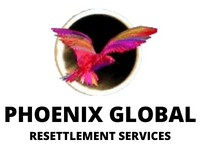Moving to Canada from another country is not an easy task. Whether you are planning to settle permanently in Canada or are relocating for better career or study opportunities, it takes a lot of time and organization to ensure a smooth transition to living in a new country. We’ve created a handy moving to Canada checklist that will provide you step-by-step through everything you need to do.
Determine the best immigration pathway
Choose between temporary residence & permanent residence
When you are considering moving to Canada for the first time, you have several immigration routes to choose from. Many newcomers apply directly for PR which permits them to live and work in Canada permanently.
However, it is important to weigh the pros and cons of each route before making a decision. For example, while it’s easier and quicker to get a study permit, it’s a longer road to Permanent Resident. Additionally, the cost of tuition for international students is quite high, and even if you are permitted to work part-time while studying in Canada, you still need to rely on your savings to cover living expenses while you study.
Canadian work experience or educational credentials make it easier to qualify for PR. So if your estimate in the Comprehensive Ranking System is low, it may be best to try to get a study or work permit first.
Prepare to apply for a permanent residency (PR).
Decide which province you wish to live in.
The province in which you settle determines the employment opportunities available, the quality of life, the cost of living, the educational opportunities for your children, and the cultural environment. Many provinces also have provincial applicant programs through which they invite newcomers whose skills are needed to fill the most sought positions in the region.
Research to learn more about Canada’s provinces and territories, the top cities where newcomers live in & the job market. This will help you decide which province to live in before applying for PR.
Identify the Right Permanent Residency Program for you
Canada has several immigration Permanent Residency programs, both federal and provincial. Most popular with newcomers, the Express Entry program includes streams for overseas skilled workers, skilled tradespeople and foreigners with Canadian work experience who wish to settle in Canada permanently.
Start your PR application process
Gather important documents for your application
As you begin completing your PR application, you will be asked to upload several documents including:
Educational Credentials Assessment (ECA):
An ECA verifies that your foreign educational qualification, diploma or certification is valid and equivalent to a Canadian one. The ECA process takes time, so start the process at least 2 months before submitting your PR application.
Language proficiency test results:
If your first language is not English or French, you must take an English or French test. For English, IRCC accepts IELTS as well as CELPIP test scores, while for French, you must take the TEC or TEF Canada tests.
Passport:
Your Permanent Residency application will be linked to your passport number, so check the validity of your passport and reissue it if it is about to expire.
Complete and submit your Express Entry or PNP profile
Once you have gathered all the important documents, you can start preparing your application. Express Entry requires you to create an account with IRCC and create a profile on one of the three streams. You will also have to pay an application fee, which includes the fee for a biometric test. Once you have submitted your profile, you will be placed in the express entry pool of candidates to await the next CRS drawing. Your Express Entry profile will remain active for 12 months or until you receive an Invitation to Apply (ITA), whichever comes first.
Responses to the Invitation to Apply (ITA)
Depending on the immigration program you are applying for, you typically have 30-60 days to respond once you obtain an ITA. At this point you will be asked to provide documentation to support the information you have provided in your profile. Some of these documents may take some time, so we recommend collecting important documents in time.
Wait for your PR request to be processed
How long does it take to process your PR?
The processing time for PR applications varies depending on the program you are applying to. In most cases, it takes at least 6 months. However, there are a few things you can work on while you wait for the transition into life easier in Canada.
Work on your language skills
English & French are the 2 official languages in Canada, although English is more common everywhere except Quebec. If you want to improve your communication skills, this waiting time is the perfect opportunity to sign up for language courses or practice at home.
Be ready to move to Canada
Get your visa stamped
Once you have received your COPR, you can prepare to move. The first step is to submit your passport for a visa stamp and provide your biometrics to the authorized body in your country. The notification you receive with your COPR from IRCC will provide detailed instructions on these steps.
Prepare to travel
With your visa as well as COPR in hand, you can book your airline tickets to Canada. Since it takes time to find rental accommodation for the long-term, most newcomers book temporary accommodation, such as a hotel, B&B or hostels.
Apply Now for Jobs in Canada
Now that you have a targeted landing date, it’s time to actively apply for jobs. Note that you can only work for a Canadian employer after receiving your PR, but if your first interviews go well you can always explain your situation to the employer & negotiate a start date after landing.




